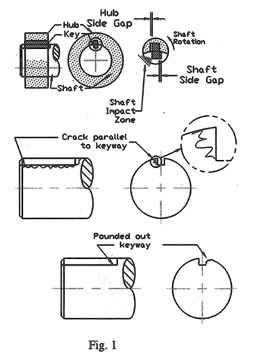About PTE
Introduction to Torque Bushings & Couplings Principles
Expanding Bushings and
Squeeze Couplings from Power Transmission Engineering, Inc. offer a
cost-effective, off-the-shelf, alternative to QD style tapered bushings, splines,
keys, or press fits for mounting / securing gears, timing pulleys, sprockets,
conveyor pulleys, or couplings to shafts.
A keyed connection has been
assumed to be the low-cost method of joining a part to a shaft. But, when one
considers the cost and skill required to accurately mill the keyway in both
components and fit the key, a keyless alternative is cost effective. Our SqueezeTorqueCouplingsJ
(STC) and ExpandingTorqueBushingsJ
(ETB) are a cost-effective alternative, and proven means of connecting
components without keys and setscrews. Both the ETB Series and the STC Series
provide the torque capacity and longevity of interference (shrink) fits, with
convenience of a clearance fit, easy assembly, with the capability for infinite
repositioning and reusability.
The Keyless Advantage
$
Reliably transmit high
torques, thrust loads and bending moments.
 $
Less assembly time
and expense than keyed and splined connections.
$
Less assembly time
and expense than keyed and splined connections.
$
No backlash under
bending moments, shock or reversing loads.
$
Reusability,
unlike most competitive bushing systems.
$
Greater
convenience than press-fits, no lengthy calculations, hot oil, bulky presses or
jigs.
$
No stress
concentration at keyway, allowing a smaller shaft diameter, for a given torque.
The Problem with Keys
Most equipment stops, starts
and is subject to vibration. This causes shock to resonate at the keyed
connections. Over time, the keyed connection to the hub begins to move and rub
on each other. This movement causes a wear phenomenon known as fretting
corrosion.
Keyway wear increases the
movement and backlash between the key, shaft and hub. These impact loads result
in a concentration of force at the key, often resulting in the shaft cracking at
the keyway. Impact loads can also pound out the keyway over time, resulting in
the key shearing or rolling, causing the connection to fail.
Often a
repair can be made, using an Expanding Bushing over the existing cracked shaft
Working Principle
 Both
the ExpansionTorqueBushingJ
(ETB) and SqueezeTorqueCouplingJ
(STC) use the principle of the inclined plane, also known as the wedge
principle, with compounded force from the lever principle. Clamp force is
created by tightening several screws, located in a radial position around the
tapered collar. As the screws are tightened, the wedges are drawn together.
The multiple screws combined force is comparable to a lever arms compounded
force, see Fig. 2.
Both
the ExpansionTorqueBushingJ
(ETB) and SqueezeTorqueCouplingJ
(STC) use the principle of the inclined plane, also known as the wedge
principle, with compounded force from the lever principle. Clamp force is
created by tightening several screws, located in a radial position around the
tapered collar. As the screws are tightened, the wedges are drawn together.
The multiple screws combined force is comparable to a lever arms compounded
force, see Fig. 2.
This axial force draws the two
tapered wedges together, which changes the force to radial. This mechanically
eliminates the gap between the wedges, shaft and hub. The wedges=
radial force is uniformly applied against the hub and shaft, mechanically
transmitting both torque and thrust loads. This wedging action provides a
tremendous amount of mechanical force in a compact design that is reliable, easy
to use, disassemble and is reusable.
The force / clamp load can be
increased in two ways. First, by having two tapers that work in tandem as they
are drawn together. Second, by increasing the number of screws, which increases
the mechanical clamp load by a linear function.
 $
Less assembly time
and expense than keyed and splined connections.
$
Less assembly time
and expense than keyed and splined connections. Both
the
Both
the